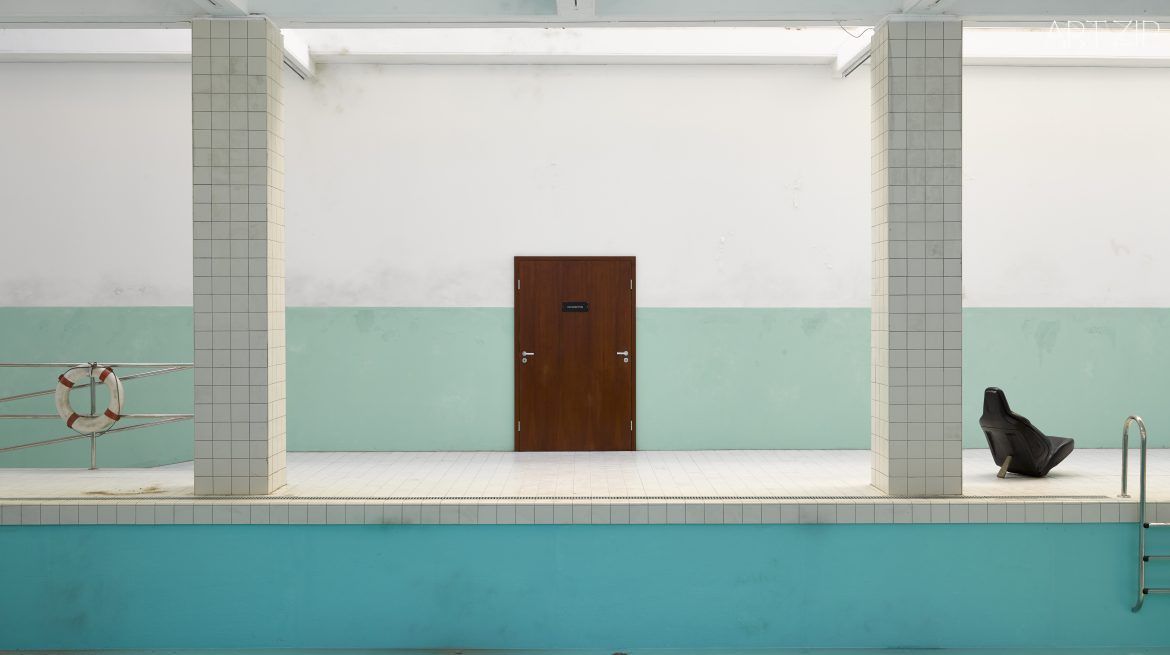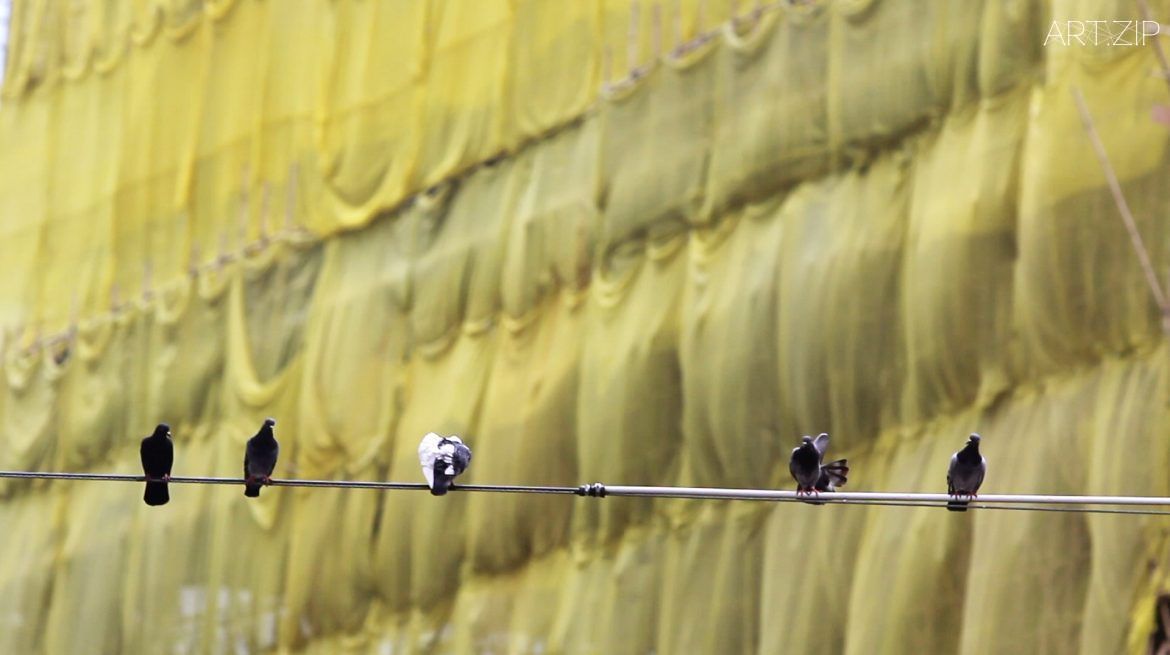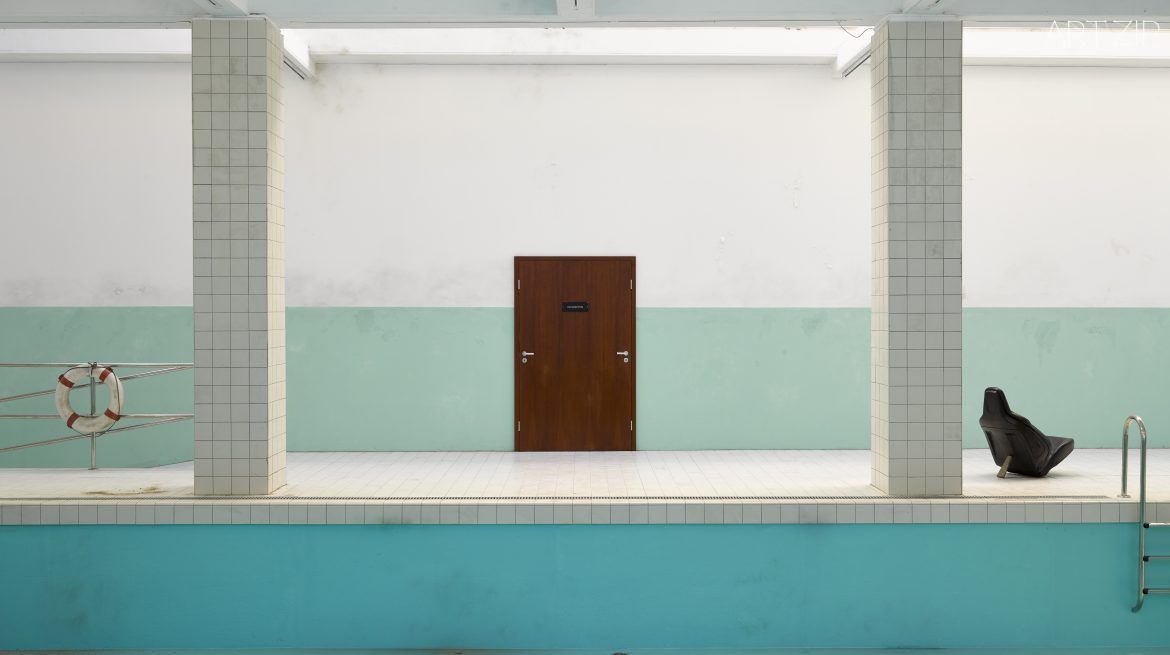
Elmgreen & Dragset: This Is How We Bite Our Tongue,
27 September 2018 – 13 January 2019
Working together since 1995, artist duo Michael Elmgreen (b. 1961, Denmark) and Ingar Dragset (b. 1969, Norway) produce beguiling spatial scenarios that explore social and sexual politics and unveil the power structures embedded in the everyday designs that surround us. In their uncanny installations, institutional spaces are transformed into metaphors for individual desires and collective identities with subversive wit and tongue-in-cheek melancholy.
This exhibition juxtaposes a survey of their emotional figurative sculptures with an extraordinary new large-scale installation that meditates on the fate of civic space.
Ulla von Brandenburg: Sweet Feast,
20 September 2018 – 31 March 2019
(In partnership with Le Prix Marcel Duchamp)
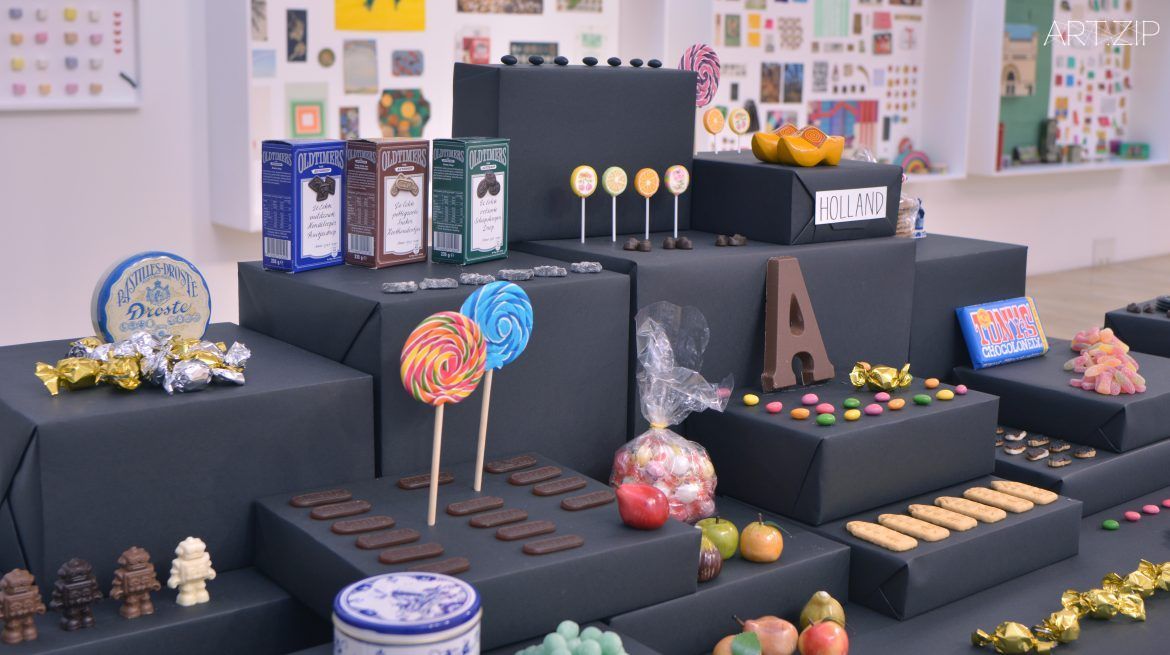
Ulla von Brandenburg, Production still from Sweet Feast, 2018, super-16 mm film, colour, sound. Courtesy the artist
Five hundred children visited Whitechapel Gallery on 28 January 1973 to learn about sweets as a popular art. An enticing display of confectionary including Belgian chocolate coins, French lollipops shaped as the Eiffel Tower, gummy mice from Germany, coffee-flavoured Hopjes from Holland, Italian marzipan fruits, salty licorice from Denmark, Irish mints and toffee from Yorkshire – was part of the ‘Fanfare for Europe’ celebrations, marking Britain’s entry into the European Common Market. Billed as a ‘Sweet Feast’, visitors were invited to sample candies that had been donated by some of the manufacturers. The exhibition came to an unexpected end when the children overwhelmed the guard and devoured all the displays.
A new film by Ulla von Brandenburg (b. 1974, Germany) commissioned by Whitechapel Gallery with Le Prix Marcel Duchamp, following her nomination in 2016 for this prestigious annual award, recreates the event. Renowned for a body of work drawing on theatre and performance to explore complex social issues, von Brandenburg has also designed a colourful seating structure resembling a landscape, transforming spectator into participant.
Filmed with children from the Arnhem Wharf Primary School, von Brandenburg explores the dynamics between the individual and the group; and the hopes of young people at a time when Brexit may limit opportunities for future generations.
Surreal Science:Loudon Collection with Salvatore Arancio
25 August 2018 – 6 January 2019
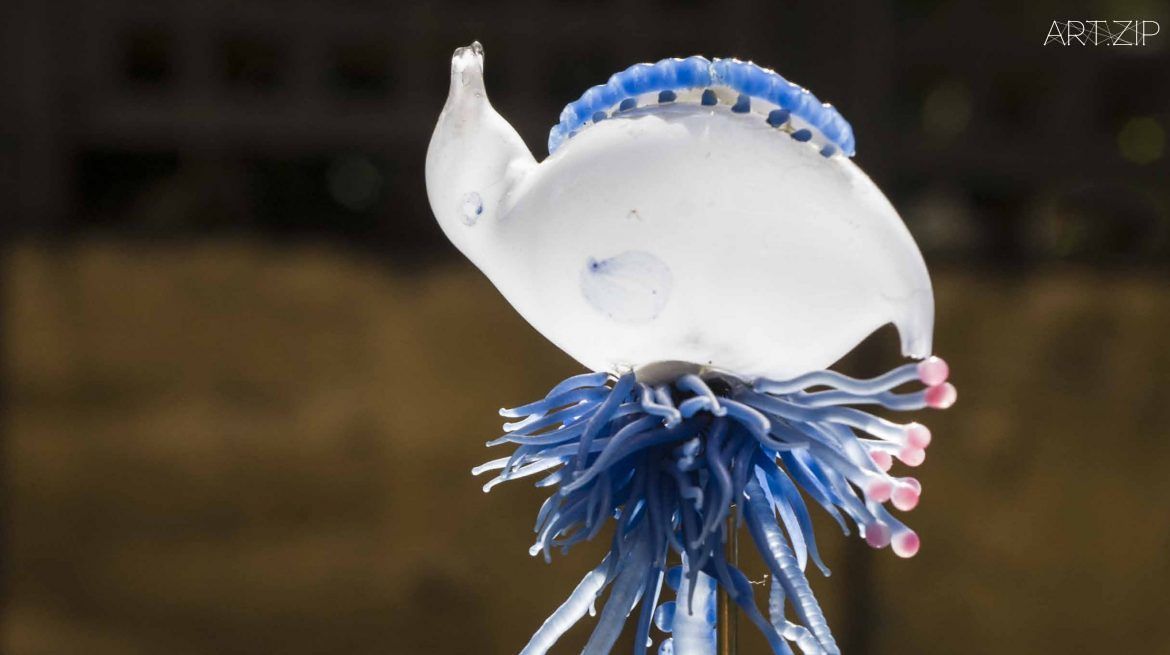
Leopold (1822-95) and Rudolf (1857-1939) Blaschka, Glass model of a Portuguese man o’war, Mid to late 19th century, 14 x 8 x 8 cm. Germany. Image Courtesy George Loudon Collection, Photograph by Rosamond Purcell
On encountering an exquisitely rendered glass jellyfish and other invertebrates by Leopold and Rudolf Blaschka in the Natural History Museum at Harvard University in 1998, Dutch art collector George Loudon began an extraordinary collection of scientific objects. These 19th century teaching models and illustrations were created for handling and contemplation in the pursuit of knowledge of the natural world.
The collection now contains over 200 objects, crafted from unexpected materials including lost-wax casts, minerals, velvet, ivory and glass and extends to strikingly-illustrated books, prints, drawings and anatomical specimens from taxidermied animals to bisected human skulls and papier-mâché flowers.
Whitechapel Gallery invites Salvatore Arancio (b. 1974, Italy) to select from and respond to the collection in an exhibition that stages the objects in dialogue with the artist’s own works. Arancio is renowned for his fantastical prints and ceramics that erupt in vividly chromatic biomorphic forms. He has devised a surreal scenography filled with sound, light and his own ceramic sculptures. They are juxtaposed with scientific objects to create startling hybrids and poetic narratives including a 19th century treatise on the shape and colour of human souls. A film with a new soundtrack by The Focus Group musician Julian House takes nature documentaries as its starting point.
Inner and outer worlds are brought together in an installation that illuminates a rare collection devoted to exploring and understanding the mysteries of nature and existence through scientific enquiry.
Staging Jackson Pollock
4 September 2018 – 24 March 2019
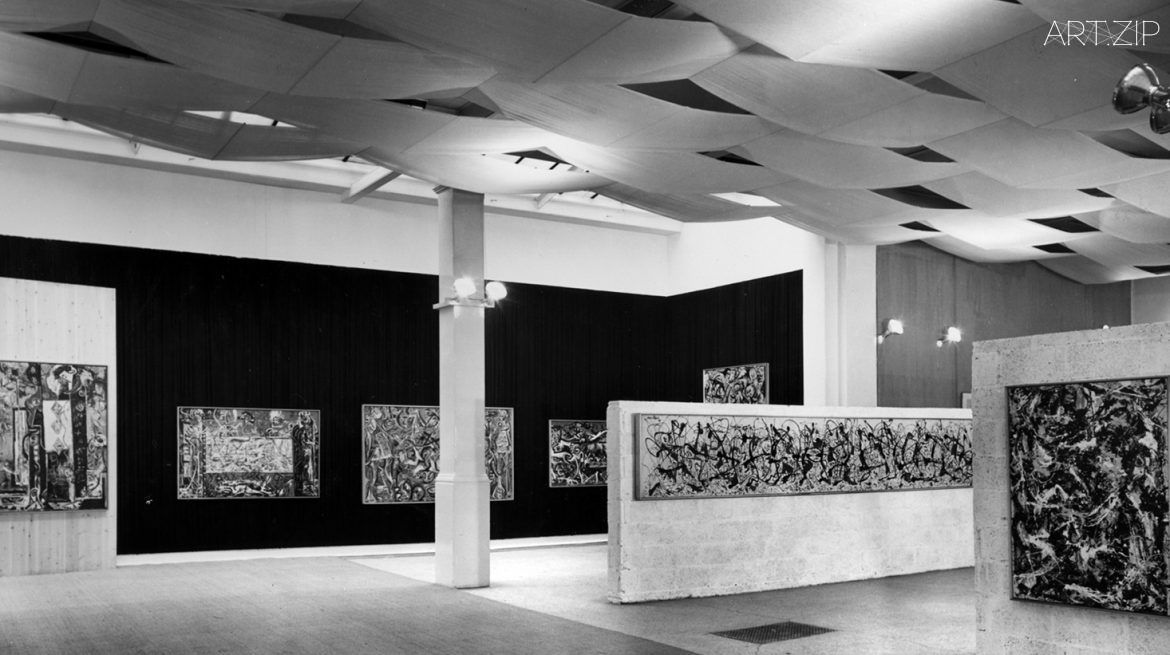
Installation view, Jackson Pollock, Whitechapel Gallery, 1958; Whitechapel Gallery Archive. Photo by Sam Lambert
The revolutionary painting of American Abstract Expressionist Jackson Pollock (1912–1956) was premiered in the UK in 1958 at the Whitechapel Gallery. Travelling to Europe from New York’s Museum of Modern Art after Pollock’s untimely death, the show provoked bewilderment and excitement. Six decades on, Pollock’s masterpiece Summertime 9A (1948) returns to
the Whitechapel.
Director Bryan Robertson had decided that the Gallery should be as audaciously modern as Pollock’s art and invited architect Trevor Dannatt (b. 1920, UK) to design the exhibition. Dannatt’s constructivist design transformed the salon style gallery into a white cube. His ‘cohesive architectural ensemble’ included freestanding breezeblock walls, black panels, footlights, and an undulating ceiling of suspended fabric immersing visitors in a powerful encounter with painting as environment. MoMA’s International Programme was rumoured to be sponsored by the Central Intelligence Agency (CIA) as part of a raft of cultural initiatives serving as soft power in the Cold War. Abstract Expressionism was used to emblematise freedom of expression, countering the communist ideology of the Soviet Union.
Staging Jackson Pollock also includes rare archival material and an exclusive recent interview with Dannatt, to revisit how the show was organised and the reasons for its profound significance.
Mikhail Karikis: No Ordinary Protest,
18 August 2018 – 6 January 2019
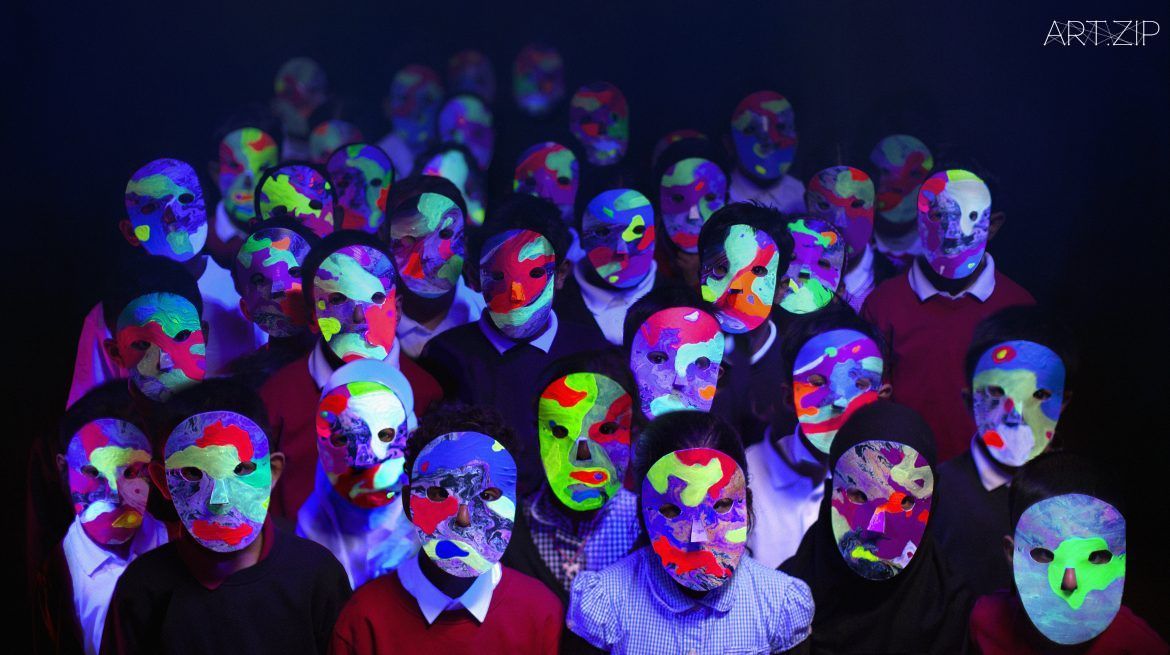
Mikhail Karikis, No Ordinary Protest, 2018. Commissioned by Film and Video Umbrella, Middlesbrough Institute of Modern Art and Whitechapel Gallery, London. Courtesy Mikhail Karikis
Can sound mobilise socio-political and physical change? Working across film, sound and performance, Greek-British artist Mikhail Karikis (b. 1975) adopts the children’s science fiction novel ‘The Iron Woman’ (1993) by British writer Ted Hughes (1930–98) as an ecofeminist parable in which communal listening and noise-making become tools to transform the world.
In this story, a female superhero gifts children with a mysterious power: a noise. Transmitted by touch, it resonates with the collective howl of creatures affected by the pollution of the planet. As the children take matters into their own hands, they infiltrate factories and ‘infect’ adults with their demand for immediate action.
For this new commission, Karikis engaged over the course of a year with a group of seven-year-olds from Mayflower Primary School in East London. Together they created a film that reflects on the environmental themes of the book and imagines the enigmatic noise that assists the protagonists’ protest. Improvising with vocalisations, musical instruments and toys, the group conduct cymatic experiments whereby a sound or vocal utterance takes on unique visual forms. Creating landscapes that transform with sound vibrations, the results echo the power to mobilise change through ‘noise’.
As the children debate, a sense of responsibility towards the environment and an activist imagination emerge. They become luminous agitators revelling in the shape-shifting properties of sound and its power to vibrate the material universe.
Artists’ Film International: Musa paradisiaca, Yim Sui-Fong, Le Xuan Tien
4 December 2018 – 27 January 2019
Musa paradisiaca is a collaborative duo named after a hybrid banana species. Their film, Masters of Velocity (2017), looks at objects and their environments, utilising dialogue and music to imagine how ‘a chainof events breeds moving thought’.
In Black Bird Island (2017) Yim Sui-Fong (b. 1983, China) observes the pigeon colonies of Hong Kong following the 1997 handover of the island from Britain to China, linking the history of the birds and Hong Kongers through ‘bird’s eye’ and ‘people’s eye’ views.
Le Xuan Tien (b. 1995, Vietnam) sources videos and images from the less visible edges of the internet in Untitled.mp4 (2017) to construct a montage of sometimes disturbing and surreal scenarios that may or may not have taken place.
Musa paradisiaca selected by MAAT, Lisbon; Yim Sui-Fong by Para/Site, Hong Kong; Le Xuan Tien by Hanoi DOCLAB, Hanoi

